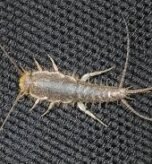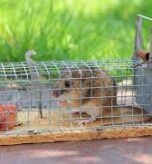The ubiquitous “daddy long-legs,” often found silently observing from a dusty corner, is the subject of one of the most enduring urban legends: that it possesses the world’s most potent venom but cannot bite humans due to its tiny fangs. This pervasive myth, which has circulated for generations, is unequivocally false. This guide aims to debunk these common misconceptions, clarify the true identity of the daddy long-legs spider, highlight its genuine nature, and empower you with accurate information to foster a more informed and harmonious coexistence.
Who’s Who in the Long-Legged Lineup?
The term “daddy long-legs” is a source of considerable confusion because it is colloquially applied to three distinct groups of arthropods. Only one of these is a true spider.
The Three Creatures Called “Daddy Long-Legs”
- Pholcid Spiders (Cellar Spiders): These are true spiders belonging to the family Pholcidae. They have two distinct body segments, typically eight eyes, and they build messy, irregular webs. Pholcid spiders are also known for their peculiar defense mechanism: when disturbed, they rapidly vibrate their webs, blurring their outline to deter threats. This is the creature most people are referring to when they talk about a daddy long-legs spider.
- Harvestmen (Opiliones): Though they look like spiders, harvestmen are arachnids but not true spiders. A key difference is their single, fused body segment. They also have only two eyes and, crucially, they lack both venom and silk glands.
- Crane Flies (Tipulidae): These are insects, not arachnids. They have a slender, three-segmented body and six very long, thin legs, resembling oversized mosquitoes. Many adult crane fly species lack functional mouthparts, which means they cannot bite humans.
Debunking the Venom Myth of the Daddy Long-Legs Spider
The core of the daddy long-legs spider myth lies in its supposed extreme venom potency. Scientific evidence, however, thoroughly disproves this claim.
Pholcid Spiders: Weak Venom and Harmless Bites
All true spiders, including pholcids, produce venom. However, the venom of a daddy long-legs spider is not particularly strong and is not harmful to humans. Research indicates their venom is significantly weaker than that of medically significant spiders like the brown recluse.
While a daddy long-legs spider can bite humans, its fangs are very small. Such a bite is often described as a mild, brief sting or a slight pinch that causes no lasting effects. The myth of their extreme venom likely originated from their observed ability to prey on more dangerous spiders, like black widows. Pholcids primarily immobilize their prey by wrapping them in silk from a safe distance before biting.
Harvestmen & Crane Flies: No Danger at All
For harvestmen, the myth is entirely false as they do not have venom glands or fangs. Similarly, crane flies pose no threat, as many adult species do not have functional mouthparts at all.
The Unsung Heroes: Benefits of the Daddy Long-Legs Spider
Far from being dangerous, the daddy long-legs spider offers significant ecological benefits by acting as a natural pest control agent in your home.
Natural Pest Controllers in Your Home
Pholcid spiders are fantastic house guests. They are highly effective predators, feeding on a wide range of common household insects such as flies, as well as other spiders, including black widows and brown recluses. Allowing them to coexist peacefully in your home can contribute to a naturally cleaner and more balanced environment.
Understanding Our Fear of Spiders
Despite the limited actual danger posed by most spiders, the fear of them, or arachnophobia, remains widespread and is often disproportionate to the real risks.
The Role of Misinformation and Media Hype
A staggering 80% of suspected spider bites in the U.S. are, in fact, misdiagnoses of other issues like tick bites or bacterial infections. The media often plays a substantial role in perpetuating this fear by portraying spiders in a sensationalist way. This leads to an exaggerated assessment of the perceived risk.
Knowing the Truly Dangerous Spiders
While most spiders are harmless, it is wise to be aware of the very few species that can pose a medical risk.
Medically Significant Spiders in the U.S.
Out of over 50,000 known spider species, less than 0.5% are considered dangerous to humans. In the United States, these include:
- Brown Recluse: Recognizable by a violin-shaped mark on its back.
- Black Widow: Females are shiny black with a prominent red hourglass mark on their underside.
- Hobo Spider: Brown with chevron-shaped markings on its abdomen.
Practical Advice: Prevention and First Aid
- Prevention: To minimize encounters, wear gloves when working in undisturbed areas like basements or sheds. Regularly clean storage spaces and seal cracks around windows and doors.
- First Aid: For a suspected spider bite, clean the wound and apply an ice pack. Seek medical attention if symptoms worsen. If you can do so safely, collect the spider for professional identification.
Fostering Coexistence with Our Eight-Legged Neighbors
A balanced understanding of spiders can lead to greater appreciation and responsible coexistence. Instead of being feared, the daddy long-legs spider should be seen as a helpful resident.
Embrace Their Presence in Your Home
Recognize the ecological importance of spiders and their indispensable role in maintaining a balanced ecosystem, even within your home. Spiders are generally non-aggressive creatures that prefer to flee when threatened.
Conclusion: A Call for Understanding the Daddy Long-Legs Spider
The creatures we call “daddy long-legs” are, for the most part, harmless and highly beneficial. By dispelling urban legends and embracing accurate scientific information, we can move towards a more harmonious relationship with these remarkable arachnids. We encourage you to approach spiders with curiosity rather than unfounded fear, learn accurate identification, and appreciate their significant ecological contributions.



